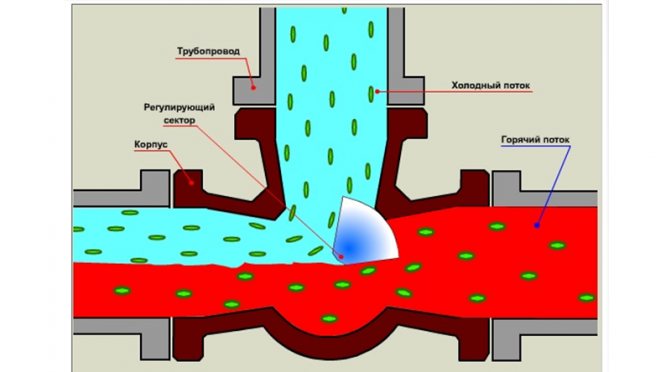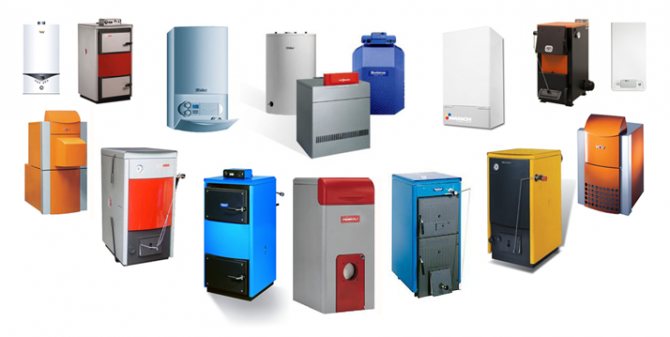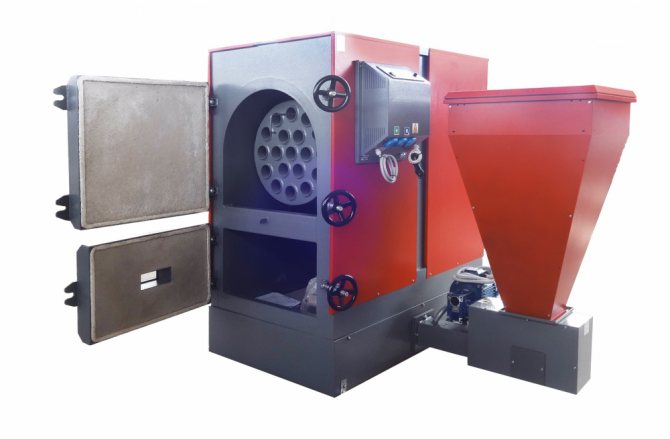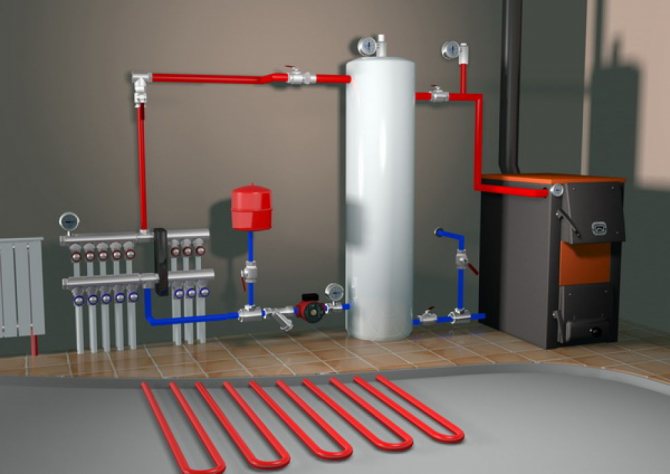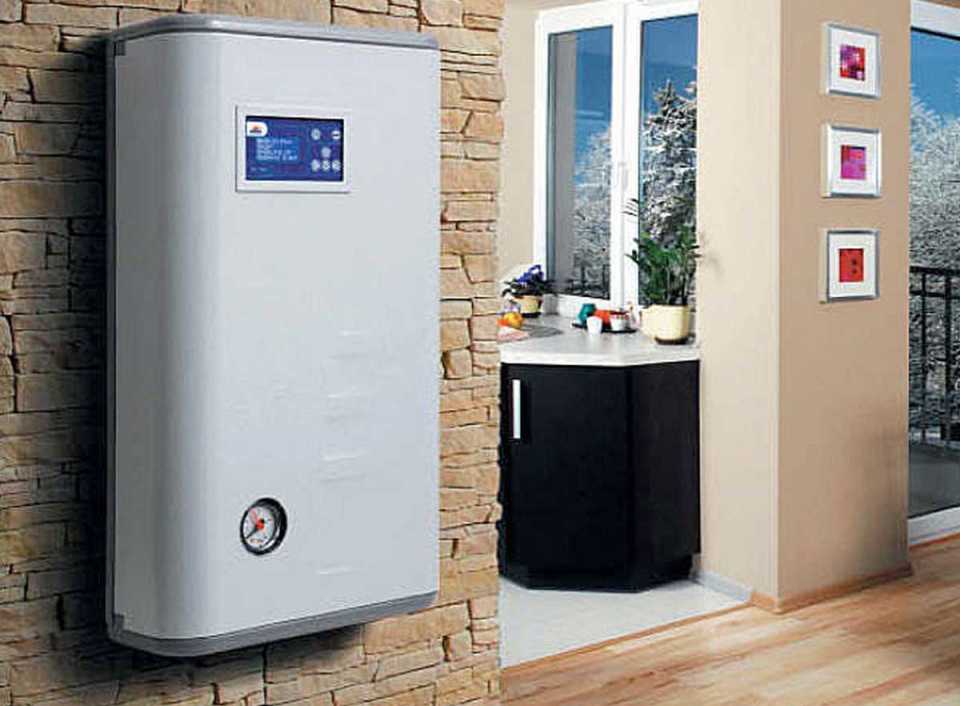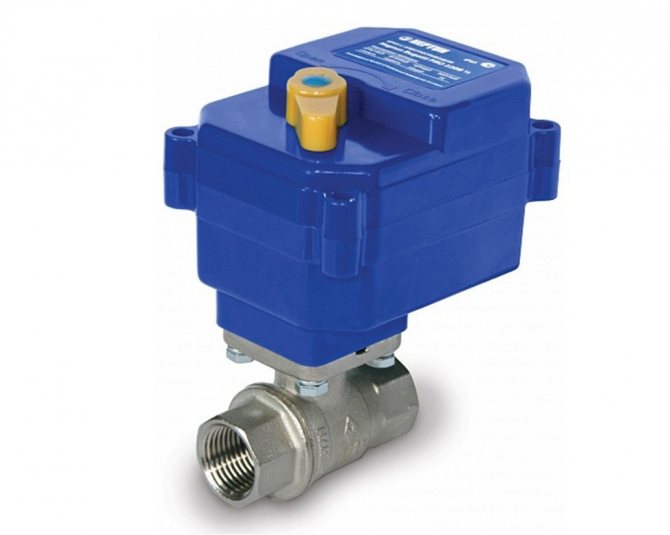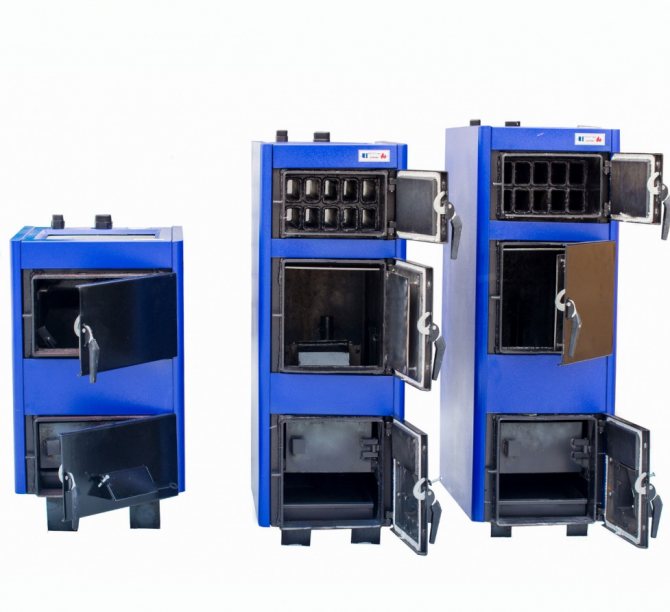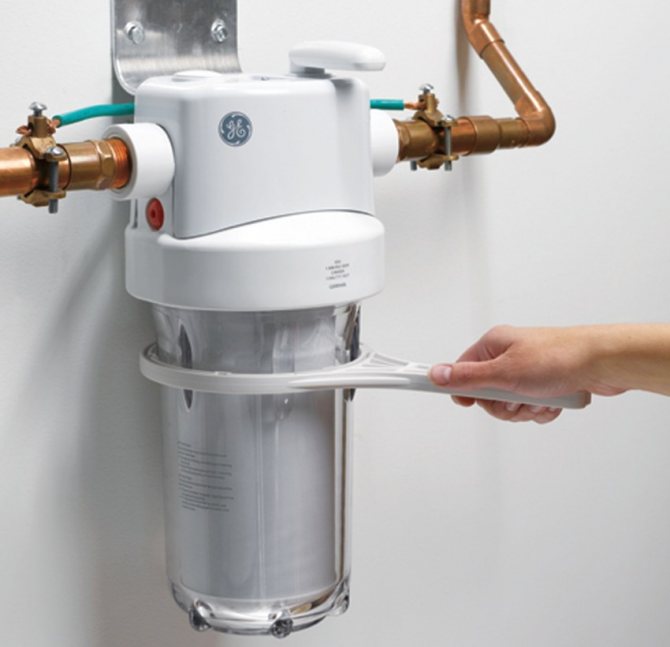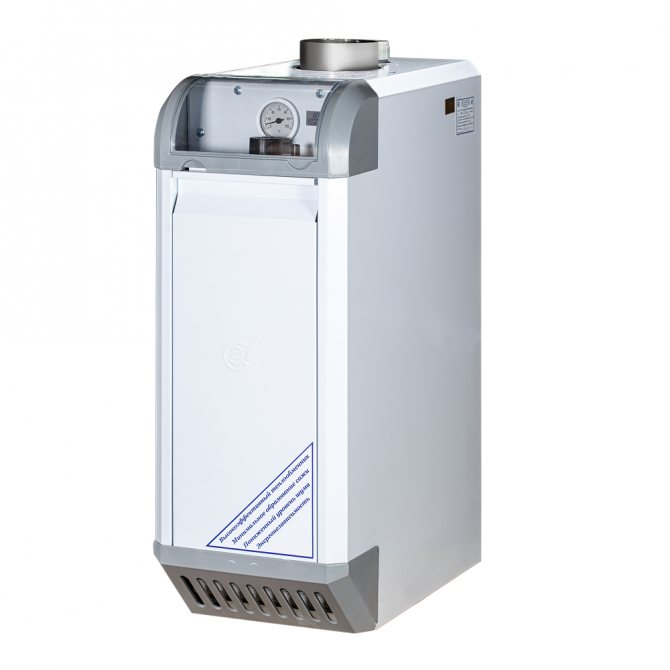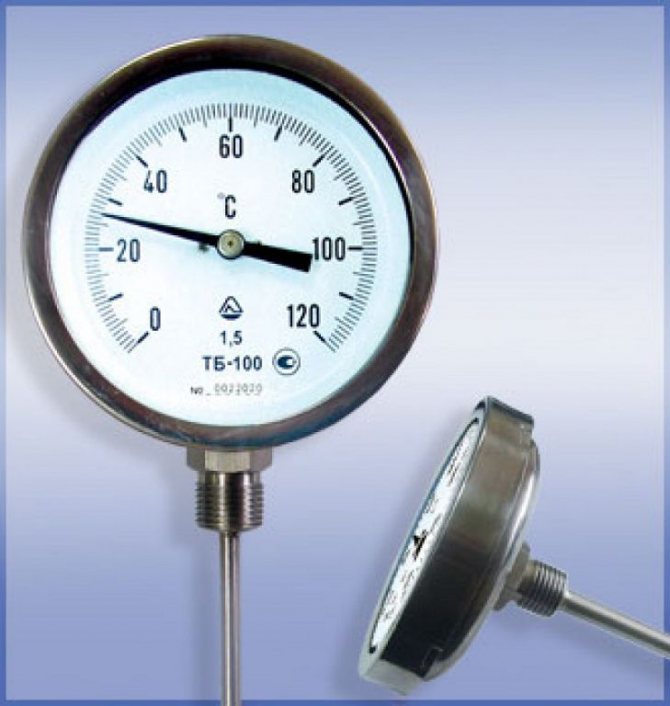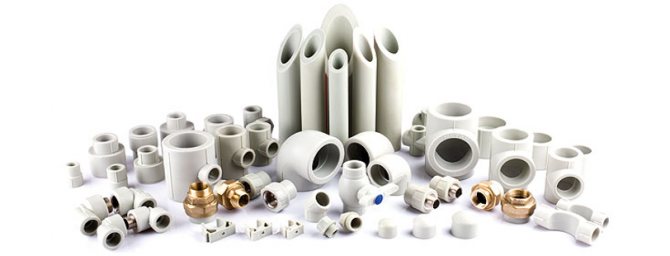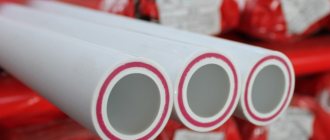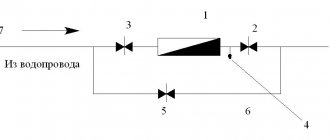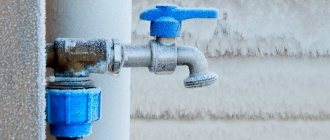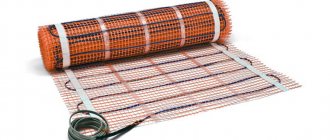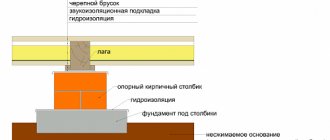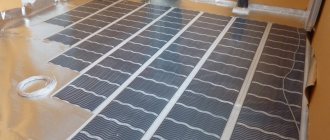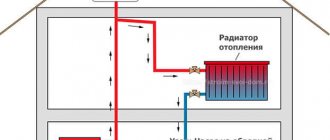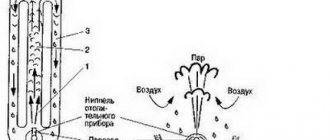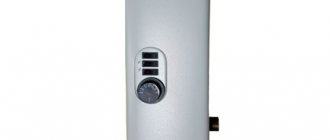A boiler thermometer is a device that has a simple and at the same time reliable design. If, when buying modern boilers, the thermometer is already included, then for old ones it will have to be purchased additionally.
A thermometer, sometimes a temperature sensor, has two functions:
- Displays the reading of the operating temperature of the heat carrier inside the boiler or heating system. Thanks to this, the owner of the heating system determines the stability of the boiler and, if necessary, changes the operating mode. For example, if the thermometer shows a drop in the temperature level, this indicates a malfunction in the heating system, and it is turned off to find out the reasons;
- Modern boilers rely in their work on automation, and she rely on the operation of measuring sensors, including a temperature sensor. Thanks to the well-coordinated interaction between automation and sensors, it is not necessary to constantly go to the boiler and regulate it in order to ensure the desired temperature regime.
There are two types of thermometers: submersible and remote.
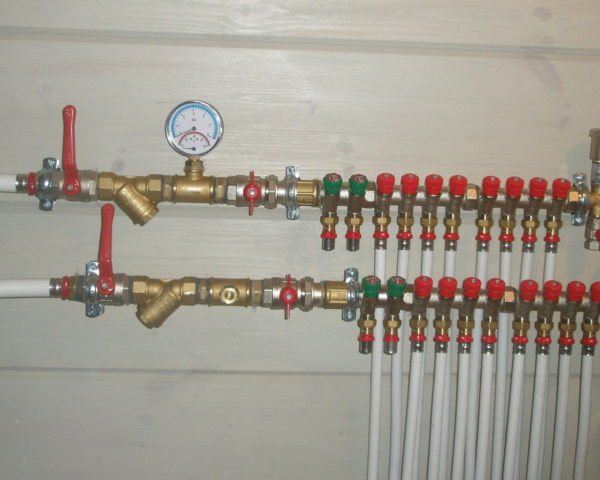
Thermometer installed in the heating system
Immersion thermometers
Designed to read information about the temperature of the heat carrier. They are installed on some segments of the system or on the boilers themselves. Depending on the working material, bimetallic and alcohol devices are distinguished.
- Bimetallic... A thermometer of this type consists of a metal plate, for the manufacture of which two different metals were used, and an indicator arrow with a scale. The work is based on the difference in the coefficients of thermal linear expansion, due to which, when heat is supplied, one of the metals is deformed and exerts pressure on the indicator arrow, which will show the temperature value on the scale.
Despite the simple operation scheme and simple design, this type of thermometer provides accurate readings.
Their only drawback is inertia. If the temperature of the heat carrier inside the boiler or in the system changes sharply, it will not become known immediately, but after a short period of time.
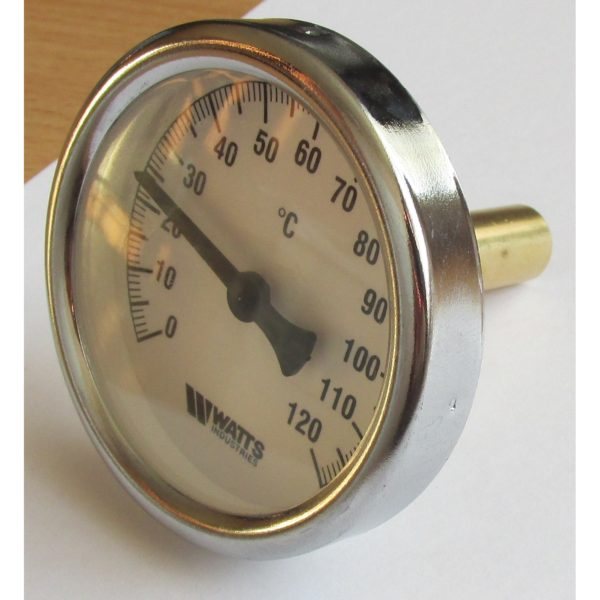

Bimetal thermometer
Bimetallic thermometers, in turn, are divided into axial and radial. The difference between these two types of products is the position of the dial axis. The axis of the radial thermometer is parallel to the sensor, and that of the axial thermometer is perpendicular.
The most reliable devices come from Watts, Dani and Introll.
- Alcohol... This type of thermometer is a vessel made of thermal insulating material with a degree scale, which is printed on the surface. The principle of operation is impossibly simple. When heated, alcohol or alcohol-containing liquid expands and moves through the vessel along the scale. The alcohol level shows the current temperature of the heat carrier inside the boiler.
There are few differences between this type of thermometer and a conventional thermometer, and hence a small drawback in working with it - visual inconvenience when taking readings.
And here the most reliable devices are manufactured by Watts.
Read the user manual first before installing the immersion thermometer. From it you will learn the upper limit of the temperature values of the product, the dimensions that are needed for connection, recommendations from the manufacturer regarding operation.
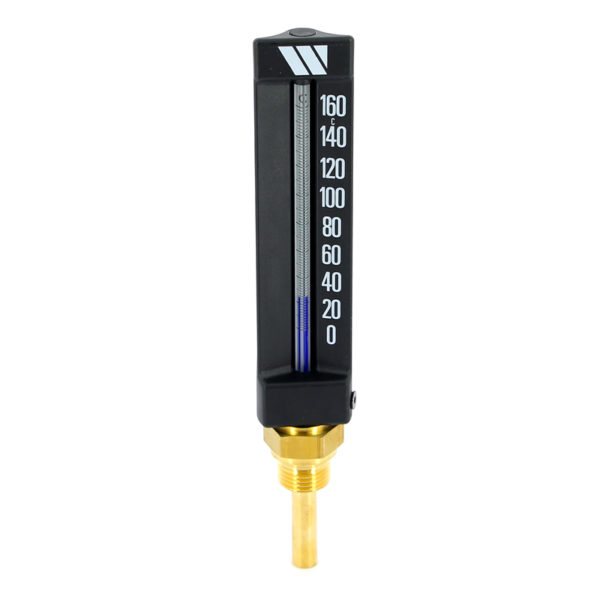

Alcohol thermometer
Types of devices for taking temperature
Thermal devices can be classified according to a number of important criteria, including the way information is transmitted, the location and conditions of installation, and the reading algorithm.
By the method of information transmission
According to the method used for transmitting information, sensors are divided into two broad categories:
- wired devices;
- wireless sensors.
Initially, all such devices were equipped with wires through which the temperature sensors connected to the control unit, transmitting information to it. Although now such devices have replaced wireless counterparts, they are still often used with simple circuits.
In addition, wired sensors are more accurate and reliable.
To ensure the consistent operation of a wired sensor used in a composite device, it is desirable to combine it with equipment made by the same manufacturer.
Nowadays, wireless devices have become widespread, which most often transmit information using a transmitter and receiver of radio waves. Such devices can be installed almost anywhere, including a separate room or open air.
Important characteristics of such temperature sensors are:
- the presence of a battery;
- measurement error;
- signal transmission distance.
Wireless / wired devices can completely replace each other, however, there are some peculiarities in their functioning.
By place and method of placement
At the point of attachment, such devices are divided into the following types:
- overhead attached to the heating circuit;
- submersible, in contact with the coolant;
- room, located inside a residential or office space;
- external, which are located outside.
In some units, several types of sensors can be used simultaneously to monitor the temperature.
By the mechanism of taking readings
By the way of demonstrating information, devices can be:
- bimetallic;
- alcohol.
The first version assumes the use of two plates made of different metals, as well as a pointer indicator. As the temperature rises, one of the elements deforms, creating pressure on the arrow. The readings of such devices are distinguished by good accuracy, but their big disadvantage is inertia.
Bimetallic and alcohol thermostats are often installed on heating equipment such as boilers. They allow you to track heating, exceeding which can lead to fatal consequences.
Sensors based on the use of alcohol are almost completely devoid of this drawback. In this case, an alcohol-containing solution is poured into a hermetically sealed flask, which expands when heated. The design is quite elementary, reliable, but not very convenient for observation.
Remote sensors
They are placed outside the heating system. Despite this, they are connected either directly to the boiler or to the programmer, which is responsible for regulating the parameters of the system. Recently, wireless sensors have gained popularity. With the help of auxiliary electronics, they transmit the temperature readings of the heat carrier to the automation, so that they are installed in the place where it is convenient.
In simple circuits, it is reasonable to install temperature sensors that transmit a signal to the control unit via electrical wires. Due to this, the likelihood of transmission failure or data loss is significantly reduced in comparison with wireless models.
Conclusions and useful video on the topic
The video below describes in detail how to install thermal devices on a heating boiler:
Does the installation of sensors on the supply and return pipes differ:
Temperature sensors are widely used both in various industries and for household purposes. A large assortment of such devices, which are based on different principles of operation, allows you to choose the best option for solving a particular problem.
In houses and apartments, such devices are most often used to maintain a comfortable temperature in rooms, as well as to regulate heating systems - batteries, underfloor heating.
Do you have something to add, or have questions about the selection and installation of a temperature sensor? You can leave comments on the publication, participate in discussions and share your own experience of using such devices. The contact form is in the lower block.
A boiler thermometer is a device that has a simple and at the same time reliable design. If, when buying modern boilers, the thermometer is already included, then for old ones it will have to be purchased additionally.
A thermometer, sometimes a temperature sensor, has two functions:
- Displays the reading of the operating temperature of the heat carrier inside the boiler or heating system. Thanks to this, the owner of the heating system determines the stability of the boiler and, if necessary, changes the operating mode. For example, if the thermometer shows a drop in the temperature level, this indicates a malfunction in the heating system, and it is turned off to find out the reasons;
- Modern boilers rely in their work on automation, and she rely on the operation of measuring sensors, including a temperature sensor. Thanks to the well-coordinated interaction between automation and sensors, it is not necessary to constantly go to the boiler and regulate it in order to ensure the desired temperature regime.
There are two types of thermometers: submersible and remote.
Thermometer installed in the heating system
What to consider when choosing
The operating parameters of the heating system influence the selection of a suitable thermometer. Pay attention to the following:
- Working range of measurements... Affects the accuracy of the readings. A temperature sensor that has an incorrectly selected upper limit of readings will display data with an error or stop working altogether;
- Connection method... When it is required to determine the level of heating of the heat carrier with a minimum error, choose among those models of thermometers that are immersed in the medium of the heat carrier. Their installation is carried out only in the heating system itself or on the boiler;
- Reading method... The method of measurement affects the speed of bringing the readings of the device to the real level (in other words, the inertia), the appearance and type of the indicator.
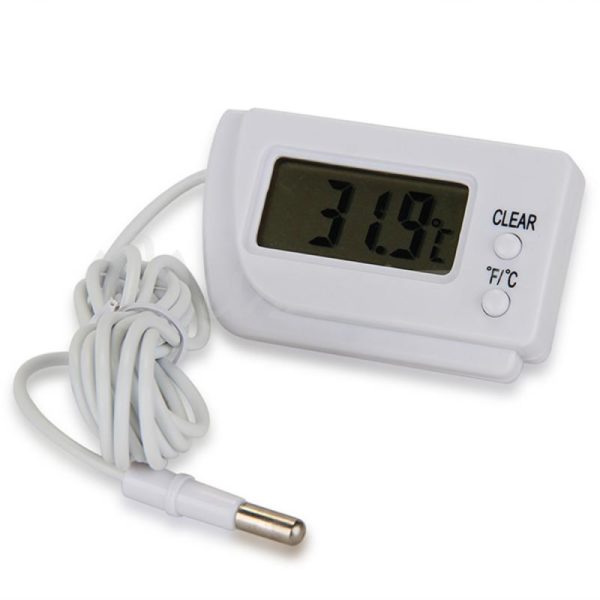

Remote temperature sensor
When choosing among immersion thermometers, be sure to consider the length of the well, which is from 120 to 160 mm. And when choosing among wireless sensors, pay attention to the signal transmission range, measurement error and the possibility of autonomous operation from batteries.
Different types of temperature sensors
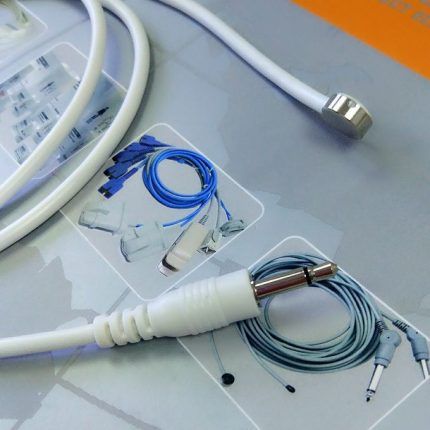

To take temperature readings, devices with a different principle of operation are used. Among the most popular are the devices listed below.
Thermocouples: Accurate Reading - Difficulty in Interpretation
A similar device consists of two wires soldered to each other, made of different metals. The temperature difference that occurs between the hot and cold ends serves as a source of electric current of 40-60 μV (the indicator depends on the material of the thermocouple).
Most often, the following combinations of metals and alloys are used for the manufacture of thermocouples: chromium-aluminum, iron-costantan, iron-nickel, nickel-chromium and others.
A thermocouple is considered a high-precision temperature sensor, but it is difficult to get an accurate reading. To do this, you need to find out the electromotive force (EMF) using the temperature difference of the device.
For the result to be correct, it is important to compensate for the cold junction temperature, using, for example, a hardware method in which the second thermocouple is placed in an environment of a predetermined temperature.
The software compensation method involves placing another temperature sensor in an isochamber together with cold junctions, which makes it possible to control the temperature with a given accuracy.
Certain difficulties are caused by the process of reading data from a thermocouple due to their nonlinearity. For correct readings, polynomial coefficients have been introduced in GOST R, which allow converting EMF into temperature, as well as performing reverse operations.
Another problem is that readings are taken in microvolts, which cannot be converted using widely available digital instruments. To use a thermocouple in designs, it is necessary to provide accurate, multi-digit converters with minimal noise levels.
Thermistors: easy and simple
It is much easier to measure temperature using thermistors, which are based on the principle of dependence of the resistance of materials on the ambient temperature. Such fixtures, for example made of platinum, have important advantages such as high accuracy and linearity.
The main problem of such temperature sensors can be considered an extremely low temperature coefficient of resistance, however, it is still easier to accurately measure it than to catch small voltage values of thermocouples.
An important characteristic of a resistor is its base resistance at a certain temperature. According to GOST, this indicator is measured at 0 ° C. In this case, it is recommended to use a number of resistance values (Ohm), as well as Tc - the temperature coefficient.
The Tx indicator is calculated by the formula:
Tcs = (Re - R0c) / (Te - T0c) * 1 / R0c,
Where:
- Re is the resistance at the current temperature;
- R0c - resistance at 0 ° С;
- Te is the operating temperature;
- T0c - 0 ° C.
The GOST also lists the temperature coefficients provided for various measuring devices made of copper, nickel, platinum, and also indicates the polynomial coefficients used to calculate the temperature based on the current resistance values.
Thermistor sensors are widely used in the electronic and mechanical engineering industries, due to the accuracy of readings, sensitivity and ease of use.
You can measure resistance by connecting the device to the current source circuit and measuring the differential voltage. The indicators can be monitored using integrated circuits, the analog output of which is equal to the supplied voltage.
Thermal sensors with similar devices can be safely connected to an analog-to-digital converter, digitizing it with an eight or ten-bit ADC.
Digital sensor for simultaneous measurements
Digital temperature sensors are also widely used, for example, model DS18B20, whose operation is carried out using a microcircuit with three outputs. Thanks to this device, it is possible to take temperature readings simultaneously from several sensors operating in parallel, while the error is only 0.5 ° C.
A popular model is the SHT1 combined temperature / humidity sensor, which allows measurements of heat with an accuracy of + 2 °, and humidity with an error of +5. However, the manufacturer himself claims that there are more accurate and economical devices.
Among other advantages of this device, one can also note a wide range of operating temperatures (-55 + 125 ° С). The main drawback is slow operation: for the most accurate calculations, the device requires at least 750 ms.
Non-contact Irometers (thermal imagers)
The action of these proximity sensors is based on the detection of thermal radiation emanating from bodies. To characterize this phenomenon, the amount of energy released per unit time from a unit surface is used, which falls on a unit of a wavelength range.
A similar criterion reflecting the intensity of monochromatic radiation is called spectral luminosity.
There are the following types of pyrometers:
- radiation;
- brightness (optical);
- color.
Radiation pyrometers allow making measurements in the range of 20-25000 ° C, however, to determine the temperature, it is important to take into account the coefficient of incompleteness of radiation, the effective value of which depends on the physical state of the body, its chemical composition and other factors.
The main active element of the radiation sensor is a telescope, inside which there is a battery consisting of a series of thermocouples. The working ends of these devices are located on a platinum-plated petal (+)
Brightness (optical) pyrometers designed to measure temperatures of 500-4000 ° C. They provide high measurement accuracy, however, they can distort the readings due to the possible absorption of radiation from bodies by the intermediate medium through which the observations are carried out.
Color pyrometers, the action of which is based on the determination of the radiation intensity at two wavelengths - preferably in the red or blue part of the spectrum, are used for measurements in the range 800 to 0 ° C.
Their main advantage is that the incompleteness of the radiation does not affect the measurement errors. In addition, the indicators do not depend on the distance to the object.
Quartz temperature transducers (piezoelectric)
To take readings of temperatures in the range of -80 + 250 ° C, you can use quartz converters (piezoelectric elements), the principle of which is based on the frequency dependence of quartz on heating. In this case, the function of the transducer is influenced by the location of the cut along the crystal axes.
Piezoelectric (quartz) devices are most often used in research work, since such devices are characterized by an extended measurement range, reliability, and high accuracy.
Piezoelectric sensors are distinguished by fine sensitivity, high resolution, and they are able to work reliably for a long time. Such devices are widely used in the manufacture of digital thermometers and are considered one of the most promising devices for future technologies.
Noise (acoustic) temperature sensors
The operation of such devices is provided by removing the acoustic potential difference depending on the temperature of the resistor.
Acoustic methods allow temperature readings to be taken in confined spaces and environments where direct measurement is not possible. Such devices have found applications in medicine, underwater research, as well as in industry.
The method of measuring with such sensors is quite simple: it is necessary to compare the noises produced by two similar elements, one of which is at a known in advance, and the other at a determined temperature.
Acoustic temperature sensors are suitable for measuring the range of -270 - + 1100 ° C. At the same time, the complexity of the process lies in the too low noise level: the sounds emitted by the amplifier sometimes drown it out.
NQR temperature sensors
The essence of the operation of nuclear quadrupole resonance thermometers consists in the action of the field gradient, which is formed by the crystal lattices and the moment of the nucleus, an indicator caused by the deviation of the charge from the symmetry of the sphere.
As a result of this phenomenon, a procession of nuclei arises: its frequency depends on the gradient of the grating field. The value of this indicator is also influenced by temperature: its rise causes a drop in the NQR frequency.
The main element of such sensors is an ampoule with a substance, which is placed in an inductance winding connected to the generator circuit.
The advantage of the devices is unlimited measurement duration, reliability and stable operation.The disadvantage is the nonlinearity of measurements, which necessitates the use of the conversion function.
Semiconductor devices
A category of devices that operates on the basis of changes in the characteristics of a pn junction caused by exposure to temperature. The voltage across the transistor is always proportional to the effect of temperature, which makes it easy to calculate this factor.
The advantages of such devices are high data accuracy, low cost, linearity of characteristics over the entire measurement range. It is convenient to mount such devices directly on a semiconductor substrate, making them perfect for microelectronics.
Volumetric temperature measuring transducers
Such devices are based on the well-known principle of expansion and contraction of substances observed during heating or cooling. Such sensors are quite practical. They can be used to determine temperatures in the range of -60 - + 400 ° C.
For the possibility of visual monitoring of the temperature, most of the temperature sensors located in the premises are equipped with displays, on which the current values are displayed
It is important to remember that measurements of liquids with such devices are limited by the boiling and freezing temperatures, and gases - by their transition to a liquid state. The measurement error caused by the environment for these devices is quite small: it varies in the range of 1-5%.
What you need to find out before purchasing
Before purchasing a thermometer, find out some points:
- Find a place on the boiler drum for mounting the thermometer and determine the mounting method. Make sure that the selected device complies with the received data and that the installation is available.
- Determine if a pressure gauge is installed in the system. If it is not in the original package, either purchase it separately, or purchase a thermometer with a pressure gauge in one case.
- Determine the required temperature measurement range. Do not take devices with a higher boundary temperature than necessary, since with a higher division value, the result is a large error. This will reduce the reliability of the purchased device.
Post-purchase check
If a submersible device was purchased from one of the above companies, feel free to install it on the boiler or in the heating system. If not, then first check it for accuracy. What for? The low accuracy of readings, inherent in cheap products, will lead to an inaccurate display of the real picture of the boiler operation, to a decrease in the efficiency and reliability of operation.
This verification process is shown in detail in the video:
How to check? Take a purchased thermometer and a probe with an external spike for water. Bring the purchased thermometer and then the control probe to an open fire for 10 seconds. Given the inertness of the readings, allow a little time for the thermometer to display the actual temperature reading. Then compare the reading of the thermometer with the control sensor. The lower the difference, the more accurate the temperature measurement and display is.
Pressure sensors as a complement to thermometers
In a diagram of a heating system with forced circulation, pressure sensors indicate the level of expansion of the heat carrier from heating. For this reason, experts recommend installing pressure meters in the heating system together with thermometers.
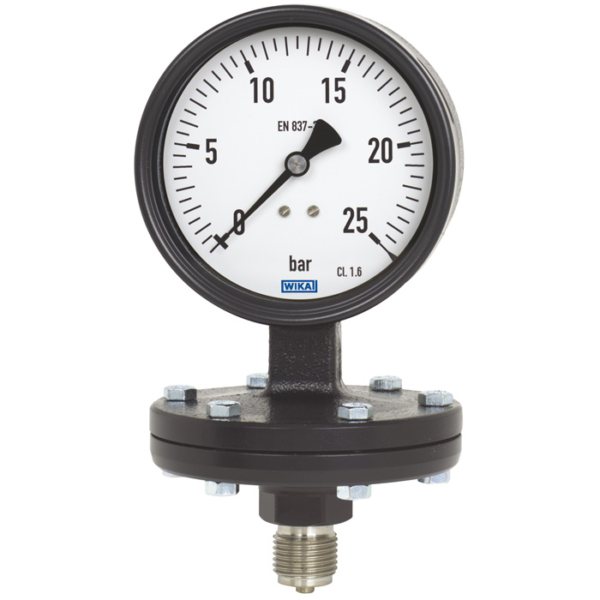

Appearance of the spring pressure gauge
The limiting value of pressure is the main indicator for pressure gauges and can in no way be lower than the maximum pressure reading in the system. As practice shows, it is better to install devices with a maximum pressure of 6 MPa.
Pressure sensors are of two types: spring-loaded and electro-contact.
Spring loaded... The role of the sensing element is played by a tube of round or oval cross-section.When a heat carrier is supplied, it shifts, and from this the arrow on the dial starts to move.
The visible advantages of this type of sensors are high operational reliability and reasonable price.
No special skills are required to mount this type of sensor.
The video will tell you about the operation of the minimum pressure sensor:
Electrical contact... Upgraded version of spring type sensors. In addition to the arrow, which indicates the main readings, there are two additional ones, they are set to the lower and upper pressure limits. When the pointer reaches one of the additional readings, the contact closes, and then an electrical signal is sent to the control device. It is advisable to install devices of this type only in autonomous systems of large objects.
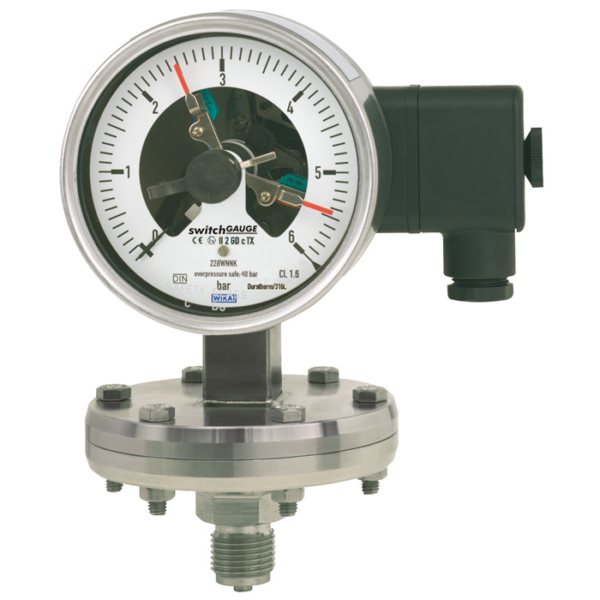

Electrical contact pressure sensor
As you can see, there is a choice among the devices for monitoring the operation of the heating system, which depends on a number of factors, such as the place of installation, the operating range, the accuracy of determining the temperature or pressure of the heat carrier. Remember: a properly selected device will allow you to accurately control the operation of the heating system and ensure the durability of its operation.
DIY installation recommendations
Such devices are widely used for various purposes: they are equipped with radiators, heating boilers and other household appliances.
Before starting the installation, you should carefully read the instructions: it indicates not only the features of the installation (for example, the dimensions for connecting to the nozzle), but also the rules of operation, as well as the temperature limits for which the measuring device is suitable.
It is also necessary to take into account the size of the sleeve, which can vary between 120-160 mm.
Consider the two most common cases of installing a thermal sensor.
Connecting the device to the radiator
It is not necessary to equip all heating devices with a thermostat. According to the regulation, sensors are installed on a battery if its total capacity exceeds 50% of the heat generated by similar systems. If there are two heaters in the room, then the thermostat is installed on only one with a higher power rating.
The valve of the device is installed on the supply pipeline at the point where the radiator is connected to the heating network. If it is impossible to insert it into an existing chain, you should dismantle the supply line, which can cause some difficulties.
To carry out this manipulation, it is necessary to use a pipe cutting tool, while the installation of the thermal head is easily done without special equipment. As soon as the sensor is mounted, it is enough to align the marks made on the body and the device, after which the head is fixed by smoothly pressing the hand.
Air temperature sensor installation
Such a device is installed in the coldest living room without drafts (in the hall, kitchen or boiler room, its installation is undesirable, as it can cause disturbances in the operation of the system).
When choosing a place, you need to make sure that the sun's rays do not fall on the device, there should be no heating devices (heaters, radiators, pipes) nearby.
The device is connected according to the instructions in the technical passport, using the terminals or cable that are included in the kit.
If it is necessary to monitor the temperature, the temperature sensor in the “warm floor” can be located in the depth of the concrete screed. In this case, for protection, you can use a corrugated pipe that has one closed end and a sloping bend.
The latter feature allows, if necessary, to remove the broken device and replace it with a new one.
The device is mounted as follows:
- A recess is arranged in the wall for fastening the attachment.
- The front part is removed from the temperature sensor, after which the device is installed in the prepared area.
- Further, the heating cable is connected to the contacts, while the terminals are connected to the sensors.
The final step is to connect the power cable and place the front panel in place.
The connection diagram for a thermostat for a heating boiler is described in detail in this article.
If the device, for the functionality of which requires the internal connection of sensors, has a complex design, it is better to contact a specialist.

